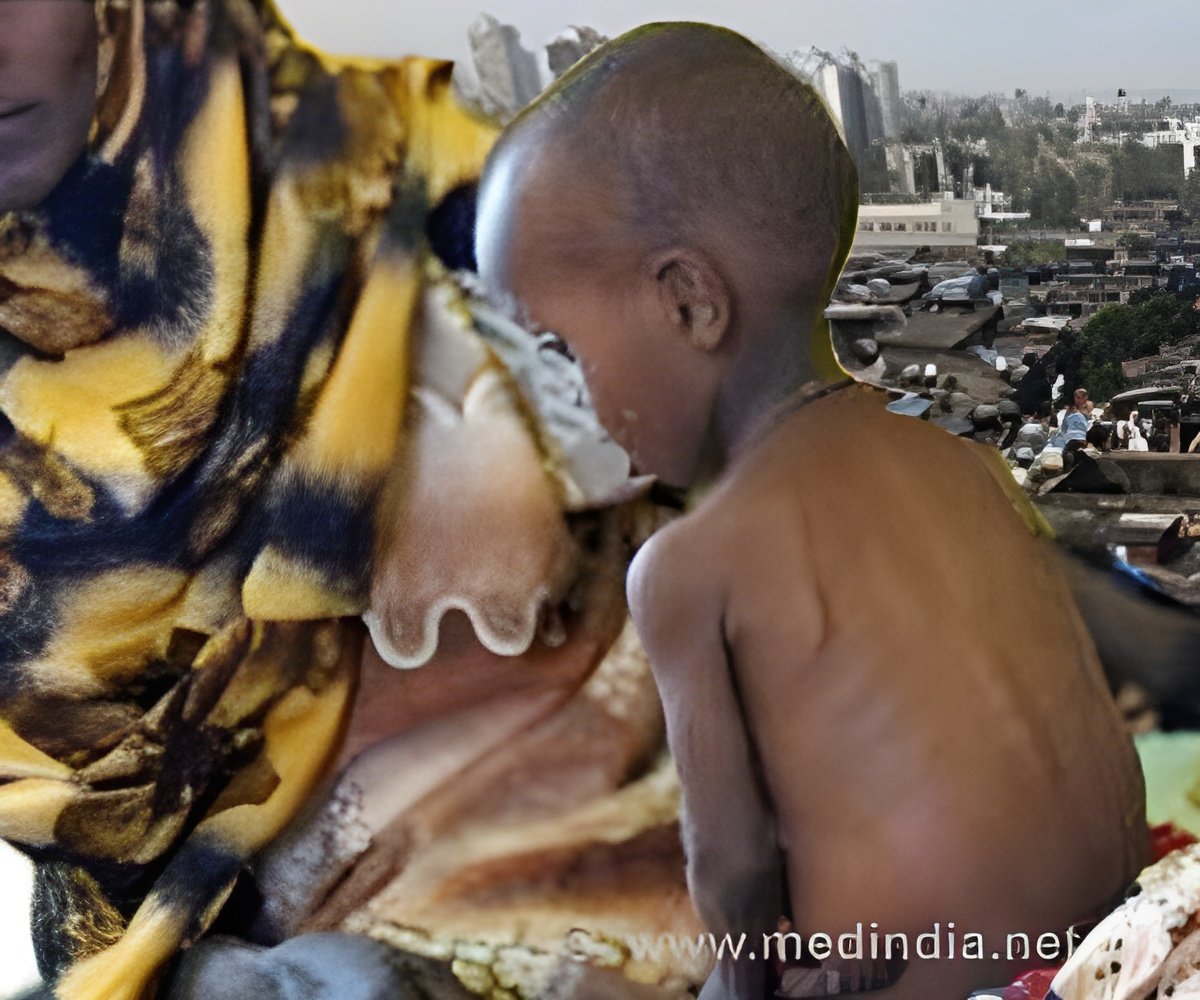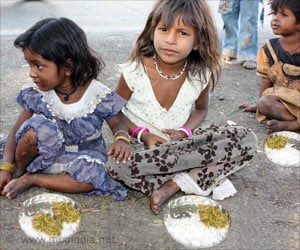
‘Nearly 40 percent of all children in India are stunted for their age and nearly 30 percent are underweight.
’
Tweet it Now
"The children who are severely malnourished can die between a few hours to a few days," says the doctor during a shift at an intensive care unit exclusively for children in India's poorest state. "For the health of any person, nutrition is the first requirement. When nutrition is affected, all of the body's functions are deranged."
The 30-bed hospital at Darbhanga in the eastern state of Bihar teems with children with protruding bellies and sunken eyes -- telltale signs of wasting and stunting, owing to severe malnutrition.
While its economy is growing at a healthy rate, India still lags behind some of its poorer neighbors on child nutrition with more than 40 million stunted children, according to a recently released report.
Despite the government spending billions of rupees on tackling the scourge, it has yet to make a serious dent in a problem perpetuated by poverty, gender inequality, and disease.
Advertisement
These children, if they survive, will grow up shorter and weaker, with their brains and immune systems compromised, more vulnerable to illness.
Advertisement
But it still far exceeds a global average of 24 percent, found the report, which was overseen by the International Food Policy Research Institute.
Shriveled and scrawny, the children at the Bihar center are weighed in bright blue plastic tubs, normally used to carry water or laundry.
There are no toys or drawings on the walls, only the sound of children wailing while others sit motionless and stare, dazed.
Normal Food 'a Disaster'
Doctors feed them a special concoction of sugar and milk based on how much they weigh.
"It would be a disaster if normal food was given to them. So we give them food that has lower calories and is easily digestible," said Prakash.
"Over time we increase the amount, then we switch to semi-solid food and gradually to the locally available food."
Zalumun Khatoon's four-year-old grandson Shahadat Hussein weighs eight kilos, just half of the normal weight for his age.
"He was on medication for nine months, then he had a fever all the time and he started to lose weight," she said, as doctors and nurses busily zipped in and out of the facility.
While overall levels of malnutrition are on the slide, eradication efforts are also being undermined by the rapid rise in India's population which is expected to surpass China's by 2022, according to UN projections.
Bihar, which already has a population of 104 million, has one of the fastest rates of growth in the country with the average woman giving birth to four children. Often this is more mouths than they can afford to feed.
The impoverished, largely rural state also has one of India's highest rates of malnutrition.
The mothers, often poor and illiterate, are undernourished themselves -- women's lower status means they lose out on limited food resources, leading many babies to be underweight from birth.
A lack of awareness means they switch to cow or buffalo milk instead of breastfeeding, making their children prone to various illnesses.
In addition, high rates of open defecation in India contribute to the problem.
The World Health Organization, together with UNICEF and USAID issued a report in November 2015 which they said demonstrated a link between a lack of sanitation and malnutrition.
Open defecation increases the spread of diarrhea, multiple episodes of which can permanently alter a child's gut, preventing the absorption of essential nutrients leading to stunted growth.
In addition, intestinal parasites such as roundworm, and hookworm, are transmitted through contaminated soil in areas where open defecation is practiced. Hookworm is a major cause of anemia in pregnant women, leading to malnourished, underweight babies, UNICEF said.
Family planning
Purnima Jha, director of the Janani family planning center, says the situation in Bihar is exacerbated by a traditional resistance and ignorance when it comes to family planning.
"We can't force everyone to have a sterilization so the basic is that we should educate them, that two children is okay," said Jha.
"In the schools, at least in high and secondary schools, contraception has to be taught."
The Bihar unit was set up last year with help from French charity Medecins Sans Frontieres (MSF or Doctors Without Borders) and authorities are hoping to open dedicated wards for malnutrition in every government hospital in the state in the near future.
Malnutrition poses a threat to India's growth -- a study by British charity Save the Children estimates that the economic impact of malnutrition on the country could be $46 billion by 2030.
Prakash says that while the specialist centers play a key role, long-term success would depend on efforts to educate mothers about both nutrition and hygiene.
"Awareness is what is needed more than a drug," he said.
Source-AFP










